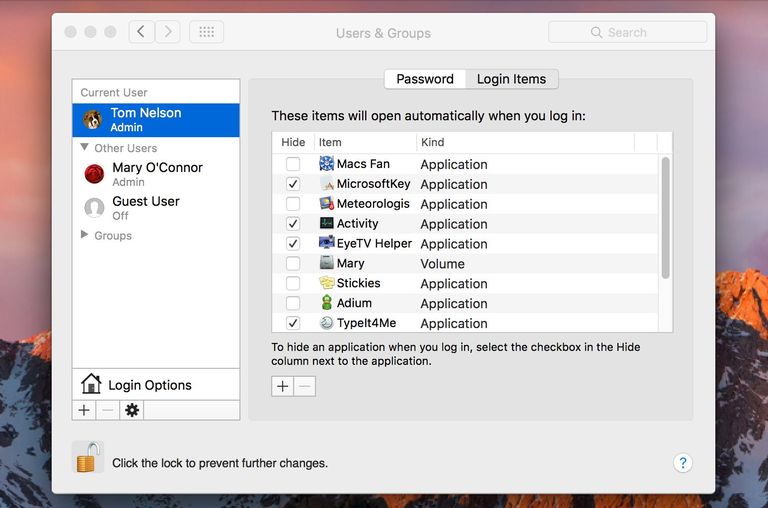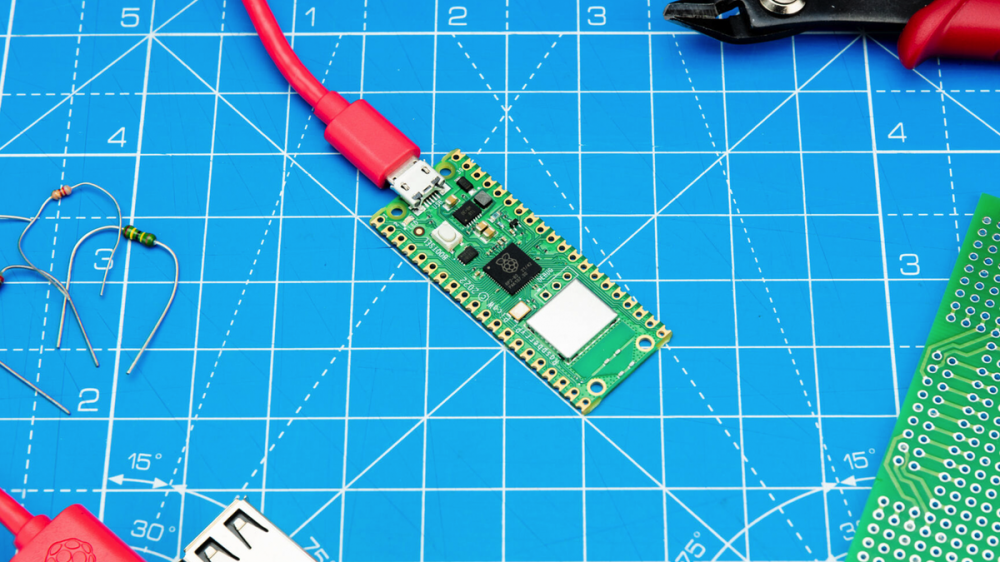
Startup items, also commonly referred to as login items, are applications, documents, shared volumes, or other items you wish to automatically start up or open when you boot or log in to your Mac.
A common use for startup items is to launch an application that you always use when you sit down at your Mac. You may, for instance, always launch Apple Mail, Safari, and Messages every time you use your Mac.
Instead of launching these items manually, you can designate them as startup items and let your Mac do the work for you.
Adding Startup Items
- Log in to your Mac with the account you wish to associate with a startup item.
- Click the ‘System Preferences’ icon in the Dock, or select the ‘System Preferences’ item from the Apple menu.
- Click the ‘Accounts’ or ‘User & Groups’ icon in the System section of the System Preferences window.
- Click the appropriate user name in the list of accounts.
- Select the ‘Login Items’ tab.
- Click the + (plus) button below the Login Items window. A standard Finder browsing sheet will open. Navigate to the item you wish to add. Click once on it to select it, and then click the ‘Add’ button.
The item you selected will be added to the startup/login list. The next time you start your Mac or log in to your user account, the item(s) in the list will start up automatically.
Drag-and-Drop Method for Adding Startup or Login Items
Like most Mac applications, the Startup/Login Items list supports drag and drop.
You can click and hold an item, and then drag it to the list. This alternate method of adding an item can be useful for adding shared volumes, servers, and other computer resources that may not be easy to find in a Finder window.
When you have finished adding items, close the System Preferences window.
The next time you boot or log in to your Mac, the item(s) in the list will start up automatically.
Use Dock Menus to Add Startup Items
If the item you wish to have automatically started at login is present in the Dock, you can use Dock Menus to add the item to the startup items list without ever having to open System Preferences.
Right-click the app’s Dock icon and select Options, Start at Login from the popup menu.
Hiding Startup Items
You may notice that each item in the login items list includes a checkbox labeled Hide. Placing a check mark in the Hide box will cause the app to start up, but not display any window that may normally be associated with the app.
This can be helpful for an app that you need to have running, but whose app window doesn’t need to be viewed right away. For instance, I have the Activity app (included with OS X) set to start automatically, but I don’t need the window since its dock icon will show me at a glance when CPU loads become excessive. If I need more info, I can always open the app’s window by clicking on its dock icon.
This also holds true for menu applets, those menu goodies that you can install in Mac’s menu bar.
You likely want them to run when you log in to your Mac, but you don’t want their app windows open; that’s why they have easy-access menu bar entries.
Startup Items Already Present
You may have noticed when you accessed your account’s login items list that there were already a few entries present. Many applications that you install will add themselves, a helper app, or both, to the list of items to start automatically when you log in.
Most of the time the apps will ask your permission, or they will provide a checkbox in the app’s preferences, or in a menu item to set the app as starting automatically at login.
Don’t Get Carried Away with Startup Items
Startup items can make using your Mac easier and can make your everyday workflow a snap. But adding startup items just because you can lead to unusual consequences.
For complete details on how to remove startup/login items, and why you should delete ones you no longer need, read through: Mac Performance Tips: Remove Login Items You Don’t Need.






